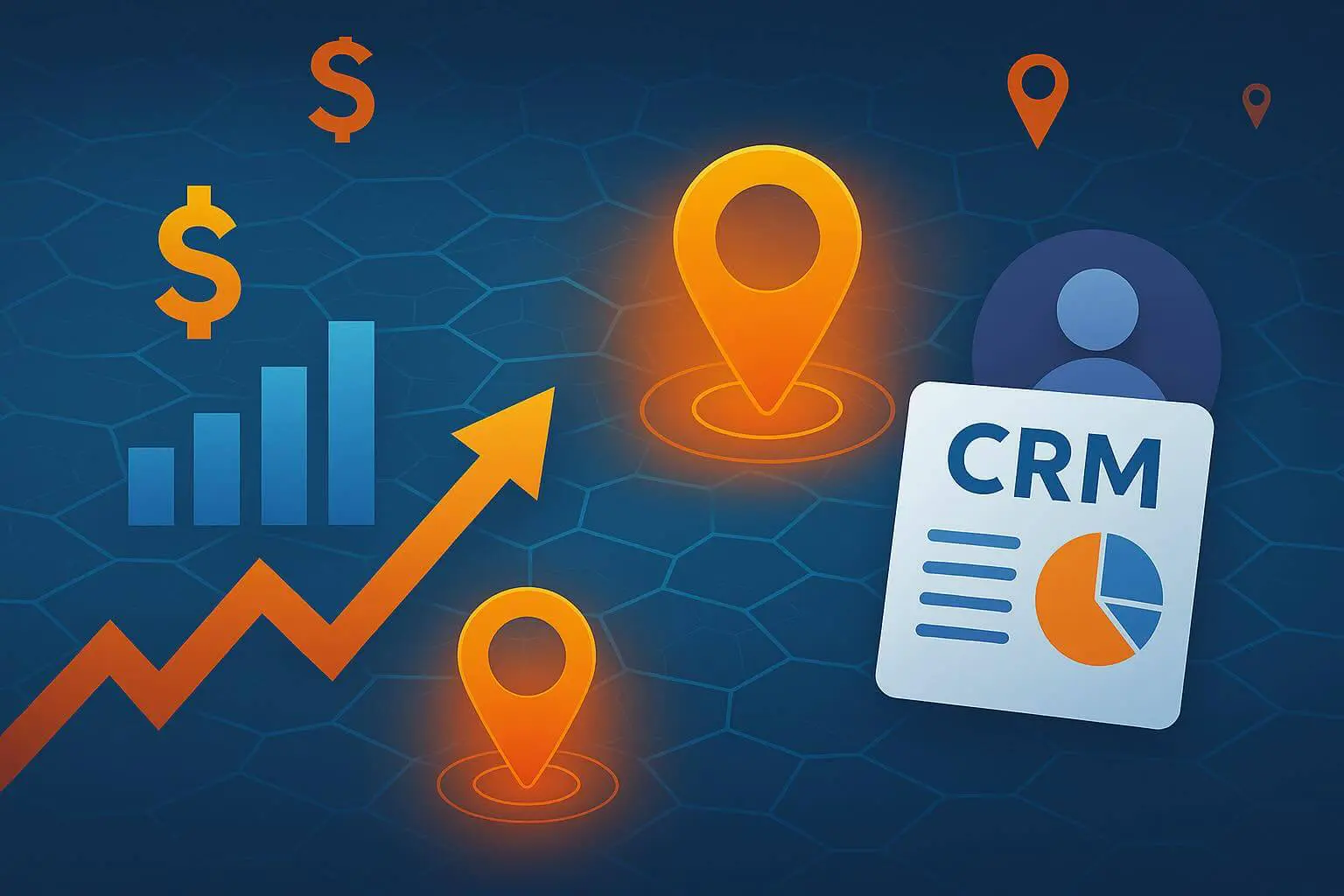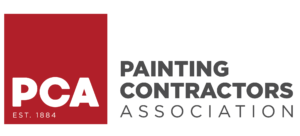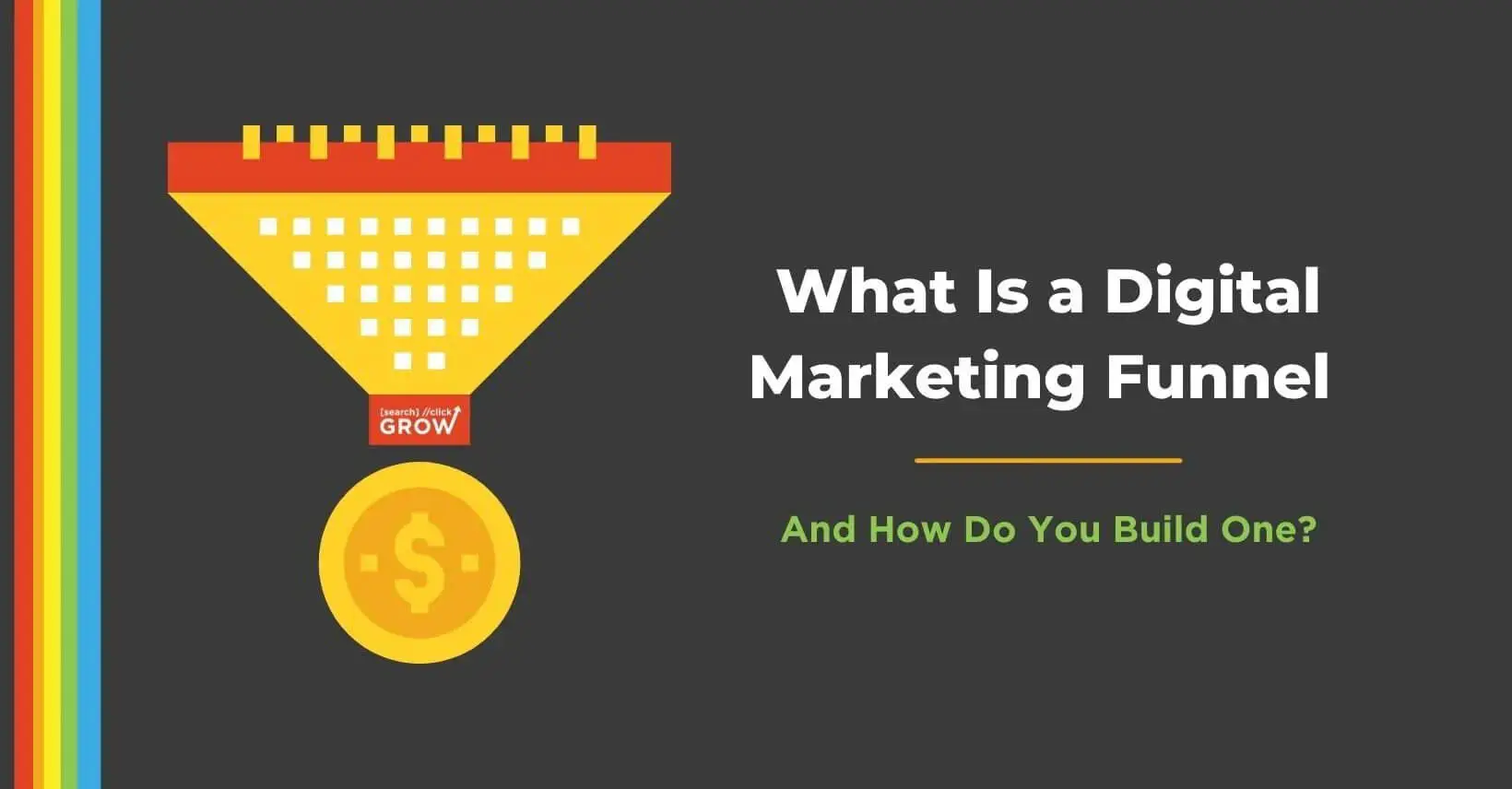
What Is a Digital Marketing Funnel and How Do You Build One?
What is a digital marketing funnel? Digital marketing exponentially broadens your company’s outreach and options.
Not only can you connect with potential customers over a number of different channels, but you can also tap into social media platforms where your marketing message will potentially take off.
Dozens of options in digital marketing automation represent a savings of time and funds while increasing your sales.
On the flip side, marketing online also presents you with several challenges:
- Keeping your branding consistent on all channels and social platforms
- Translating exposure to traffic and sales leads
- Optimizing your website to make the most of traffic and leads
- Managing tools and technology
- Creating effective content
If you don’t meet these challenges, your marketing dollars may not produce your desired results – generating revenue for your company.
When you use an automated digital marketing system that incorporates the marketing funnel concept, you can expect to significantly expand your customer base.
The marketing funnel is a time-tested method for turning leads into customers and build loyalty with an attractive value proposition.
Learn more about the marketing funnel, how to build one and how to keep your customers long-term once they have made it through.
What Is a Digital Marketing Funnel?
You already know how a funnel works. It’s wide at one end where you pour your motor oil in. It narrows to a small opening where the oil enters the engine, providing lubrication so that all the moving parts work smoothly, without friction.
Think of your business as the engine. The oil consists of marketing leads that match your firm’s typical buyer persona. The funnel catches them and directs them neatly into your engine, where a landing page awaits.
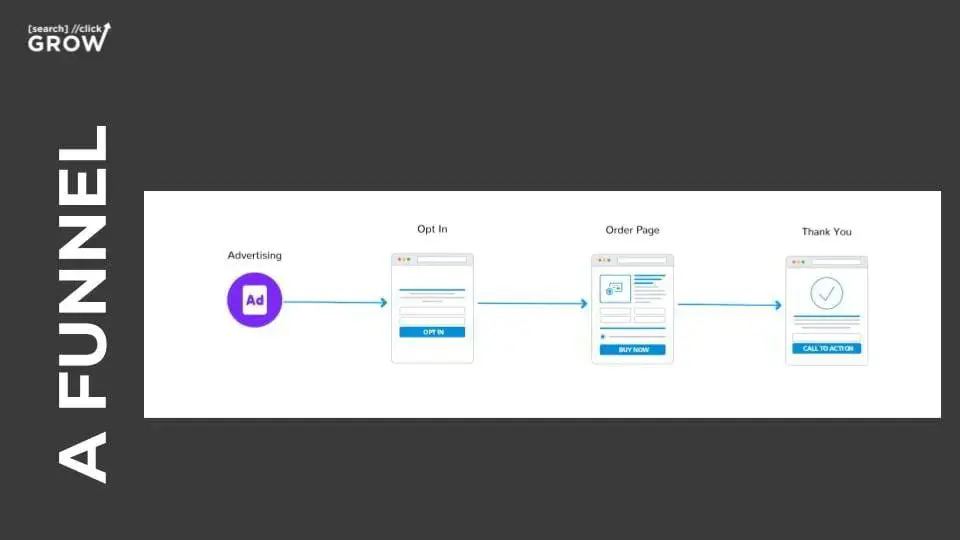
From there, they progress through the conversion process. The money they spend keeps the engine running smoothly, preventing breakdowns, backfires and the severe damage of running dry.
You may have also heard the term, “sales funnel”. It is basically the same thing as a marketing funnel.
Because marketing is more robust, encompassing branding, lead generation and buy-in as well as sales, you could say that the marketing funnel is larger.
However, they both involve converting leads to customers.
A marketing funnel has different stages that coincide with the size of your audience during the progression of the marketing process:
- The awareness stage includes the largest number of people, and it sits at the top or the widest part of the funnel. It simply involves making as many people as possible aware of your company’s products or services.
- The consideration stage is next. This is when some of those in the awareness group weigh what you offer in terms of branding and value against the competition.
- As the funnel narrows further, your leads reach the conversion stage, where they become customers.
- Moving into the narrow tip of the funnel, they enter the loyalty stage. Through customer perks, emails and social interactions, you keep them loyal to your brand.
- Finally, at the narrow end of the funnel, which corresponds to the advocacy stage, your loyal customers advocate for your brand with family, friends and social connections.
Why You Need a Digital Marketing Funnel
A funnel is more than a passive tool where leads drift in and customers drip out. It can be a dynamic process that is more like a whirlpool, pulling your future clients from general awareness into a vortex where learning, conversion and retention take place.
While your newly aware contacts are considering your company’s value proposition, which happens in stage two, your automated funnel software stays connected with those contacts until they start to grow.
For example, you write the emails that instill your funnel program with a human element that makes recipients more receptive to your products or services.
Research bears out the value of putting energy and marketing funds into lead cultivation.
According to data gathered by the Annuitus Group, companies that adopted automated marketing technology generated 451 percent more leads than they did before.
However, unless your marketing effectively cultivates those leads through the rest of your digital funnel, your prospects are likely to leak out. If they don’t find your landing page engaging, your prospects will go elsewhere.
You must be able to immediately engage active leads and bring them to the next part of the process where you convert them to bonafide customers.
Simply put, you must make the initial sale. Once that occurs, your digital marketing system employs engagement tools to retain first-time customers and ultimately earn their loyalty.
Before becoming digitized, the typical conversion funnel retained only about 3 percent of the leads through to the advocacy stage.
That means they lost nearly 97 percent of their marketing dollars through leaks in the process. With digitization, the marketing funnel has become far more productive and significantly more cost-effective.
If your company does not have a digital marketing funnel, you need to get one. It will not only attract new customers but it will also provide an economical solution to online marketing.
Which Works Better, a Funnel or a Website?
From a sales viewpoint, a digital marketing funnel attracts, converts and retains customers at a rate that far outshines a website.
From a user’s perspective, a funnel offers few options, little if any navigation and one final destination. For these reasons, many companies have both.

Properties of a Website:
- Two-way traffic to and from home page
- Multiple pages to explore
- Multiple off-ramps where customers can leave without buying
Properties of a Digital Marketing Funnel:
- One-way traffic from top of funnel to bottom
- Pre-determined pathway
- Designed to contain and retain throughout process
What is a digital marketing funnel with the best chance for success? An effective marketing funnel does not overwhelm your leads with choices.
In fact, the opposite is true. It deftly leads them through the process by asking “yes” or “no” questions designed to convert, close and retain.
Before potential customers are prepared for the digital marketing funnel journey, though, they have questions. They are curious to learn more. Otherwise, they would not be visiting your website.
Savvy customers want to thoroughly vet your products or services. They want to compare your value proposition to what other firms are offering. They want to see what your current customers are saying.
Once they are satisfied with their new knowledge, they are ready for your funnel. That’s why you need a website and a funnel.
If you’re wondering how to get both a funnel and a website in one tool, check out SiteFunnels and get a 14-day trial. You can build your websites AND your funnels with a single, simple drag & drop builder.
Types of Funnels
Companies and products are different. Your target audience is not identical to anybody else’s.
One sized funnel does not fit all, so you have more than one to choose from. Some of the most popular funnel types include:
Lead Gen Funnel: High Ticket and Low Ticket
Whether you sell high-ticket or low-ticket products, a lead gen funnel may be right for you.
This particular funnel focuses on finding fresh leads for your products or services with the end goal of increasing your sales.
High Ticket
When you are selling high-ticket items, the value of a single sale is significantly greater than when you are selling low-ticket goods.
That means the stakes are higher, and you need to optimize your funnel for success.

You will have a smaller pool of leads because fewer people purchase high-ticket items. You will need to put in a lot of effort nurturing your leads because they will be more hesitant to buy due to the high cost.
Also, it will be more important than ever to retain those customers once they make a purchase because they are your best source of continued sales.
Low Ticket
A low-ticket funnel relies more on quantity than quality. Your funnel should have a wide mouth to capture all the leads possible.
This is easier than with high-ticket items because far more leads can afford your inexpensive goods or services.
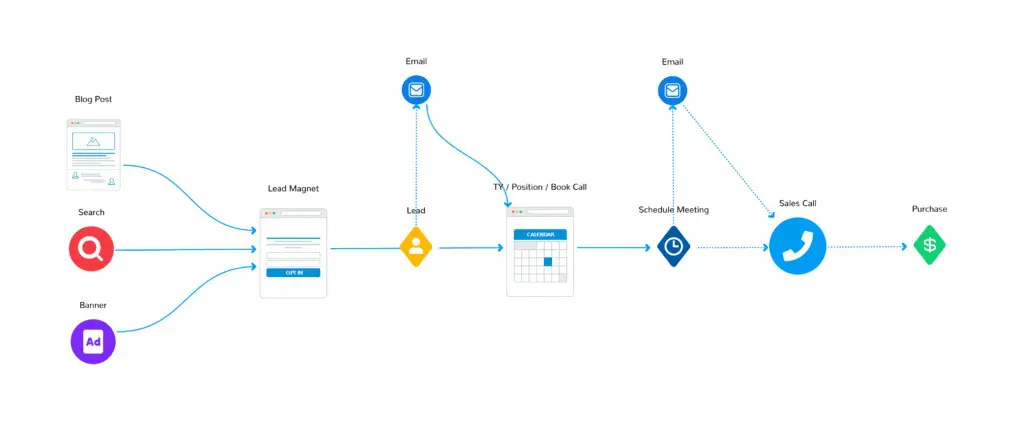
Also, due to the greater number of leads and the lower cost of your goods, the nurturing phase may be less intensive. If you are selling what people want, they will need less convincing.
Finally, retaining your customers at the bottom of the funnel is still important, but because you are drawing from a larger pool of people, it is not as critical as with a high-ticket digital marketing plan.
Product Funnel: eComm and Affiliate
If your company sells its own products to consumers online, you need a product funnel.
You should customize your digital funnel to fit the unique aspects of your product, to appeal to the heart of your demographic and to make the sale an inevitable conclusion.
eComm Funnel
The eComm funnel features the typical progression that hones your demographic from product awareness through desire and action (sales), but if you gear it specifically toward your firm’s goods or services, you can optimize your outcome.
For example, if you sell pet products, your outreach during the nurturing stage should focus on the welfare and well-being of your leads’ beloved pets.
You might send out a news release that touts your company’s support for homeless pets. This earns the trust of like-minded pet owners, making them more likely to become customers further down the funnel.
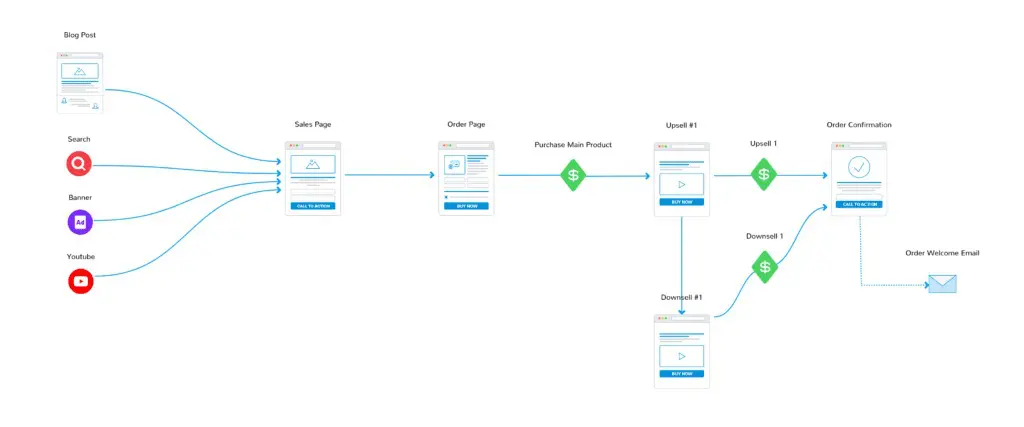
Affiliate Marketing Funnel
An affiliate digital marketing funnel is a valuable tool for selling other company’s products.
For instance, each year, affiliate sales account for billions in revenue on Amazon.
You use your website to promote the products someone has granted you permission to sell. Your affiliate funnel converts leads to customers, and at the point of sale, you earn a commission.
The more effective your funnel, the more you earn as an affiliate.
Education Funnel: Course or Webinar
When you are offering a course or webinar, you need to draw in people with a need or desire to learn more on a particular topic. Reaching your target audience requires a clear focus.
Prospective registrants might be physicians who want to know the details of a new cancer treatment. They might be contractors who want to improve their management skills.
A course or webinar for professionals should recognize their available time is limited. The education funnel should reflect that need.
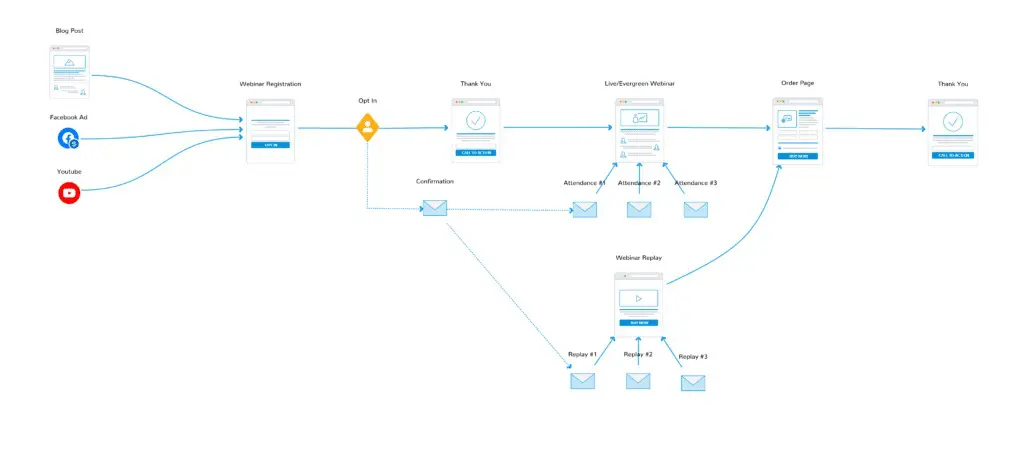
Your leads do not have time to read a string of teaser emails, so your outreach during the initial stages should be brief and direct. Specific and clear communication during the nurturing phase is critical.
You might even offer one-on-one demos of your course materials to further engage your leads.
Once people register for your course or webinar, you must make certain the information delivers exactly what you advertised. You should present the information at a professional level.
These strategies will earn the loyalty of your students, and they will be more likely to register for more of your courses or webinars.
How to Build a Funnel
If you keep circling back to the questions, “What is a digital marketing funnel and how do you built one”, try following the steps below.
Keep your company’s value proposition firmly in mind as you customize your funnel to fit your firm’s products or services.
Step 1: Define Your KPIs
Key performance indicators measure how well your company is meeting its goals.
They provide objective metrics regarding how well your marketing is working and where you can improve performance

The first step in building your funnel is defining your KPIs. These might include:
- Inputs, or the resources you put into your marketing program
- Process, or the methods you are using to produce your desired results
- Outputs, or what your inputs and processes have produced
- Outcomes, or the longer-term effects of your digital marketing funnel
- Project, or measures of your campaign’s success
For example, the inputs of a digital marketing campaign selling pet food would include market research comparing different pet foods and an analysis of the pet food you are selling.
The process would involve establishing product awareness, nurturing leads based on a shared interest in pet health and support programs. The outputs include pet food sales and brand trust.
You would gauge outcomes according to longer-term sales figures. The project KPI would be your expanding customer base.
Step 2: Choose Your Funnel Type
The product you sell largely determines your funnel type. If it is a low-ticket, non-specific product like paper napkins, a straightforward lead generation funnel would work the best.
If you sell a niche product like pointe shoes for ballet or high-ticket goods such as luxury cars, your funnel should appeal to a more specialized clientele, starting with a smaller pool of leads and narrowing to an elite group of conversions.
Step 3: Craft Your Offer or Product
This includes several elements, such as:
- Branding
- Quality
- Benefits
- Pricing
If you have done your homework and know your buyer persona in depth, your offer will be successful in reaching your target audience with maximum impact.
Step 4: Create Your Pages
You improve your chances of reaching your target audience when you build a landing page that resonates with them.
Company branding, product awareness, bonding with customers, and making sales should all have associated landing pages where your leads can go to find out more.
For example, if you sell camping equipment, a page describing your company’s small environmental impact helps you communicate you care about the outdoors, helping you create a trustworthy brand.
Step 5: Create Your Emails
Emails throughout the stages of your digital marketing funnel keep you connected to your leads, customers and advocates.
Each and every email you send out to potential and existing customers should offer value.
From interesting details about your products to links to your informational pages, added value ensures that people will open and read your emails more consistently, increasing their market value.
Step 6: Connect Marketing Automation Software
As business owners continue to recognize the value of automation, the marketing automation software industry continues to grow.
You have many options in software that not only generates and nurtures new leads, but also helps you craft the most effective digital marketing funnel for your business needs.
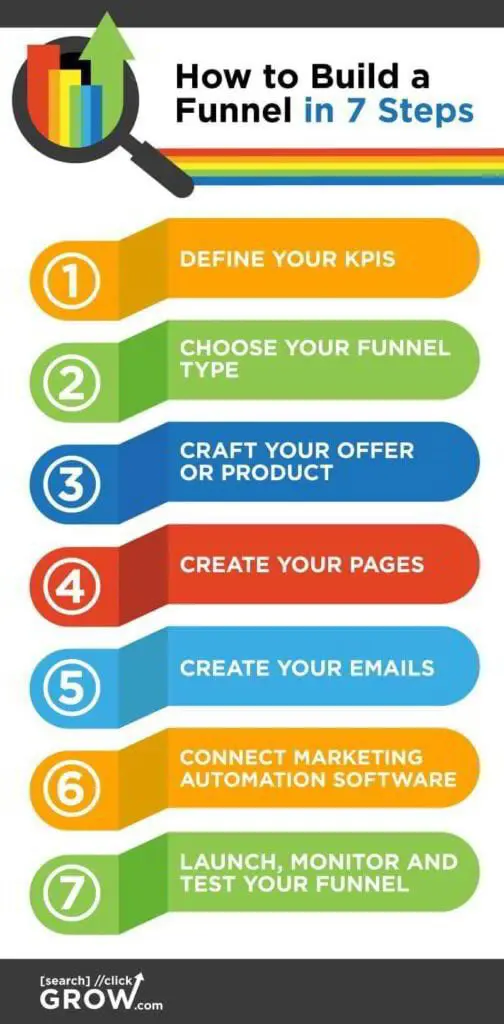
Whether you sell high-ticket items, low-ticket goods, educational webinars or affiliate products, a customized digital funnel is likely your best bet for increasing your sales.
Unless you have the know-how to customize one of the generic marketing automation packages available, you should seek professional assistance in building or tweaking your funnel for a tailored fit.
Keep in mind that a sales funnel is not a single-use marketing tool. Rather, a funnel should always be filled with a continuous stream of inbound traffic. Automation makes this possible and cost-effective.
Step 7: Launch, Monitor and Test Your Funnel
Once you incorporate your current marketing program with your new, customized automation software, you can start to measure your results. If your firm is like most companies who have switched to digital marketing, you will find a marked increase in KPIs.
Also, if you find a low-performing indicator, you can pinpoint strategies for improvement so that your entire digital marketing system becomes more robust and ultimately effective.
Conclusion
Digital marketing solves many of the age-old difficulties of locating, connecting, and doing business with customers. It streamlines the time and effort of lead generation while making the conversion process more inevitable than ever before.
The trick is to customize your digital marketing funnel to reflect your company branding and appeal to your target audience.
If you’re interested in learning more about marketing funnels or you’re looking for other tools to help take your business to the next level, check out our resources page.
We consistently create content, including ebooks, web apps, weekly webinars, and more.

